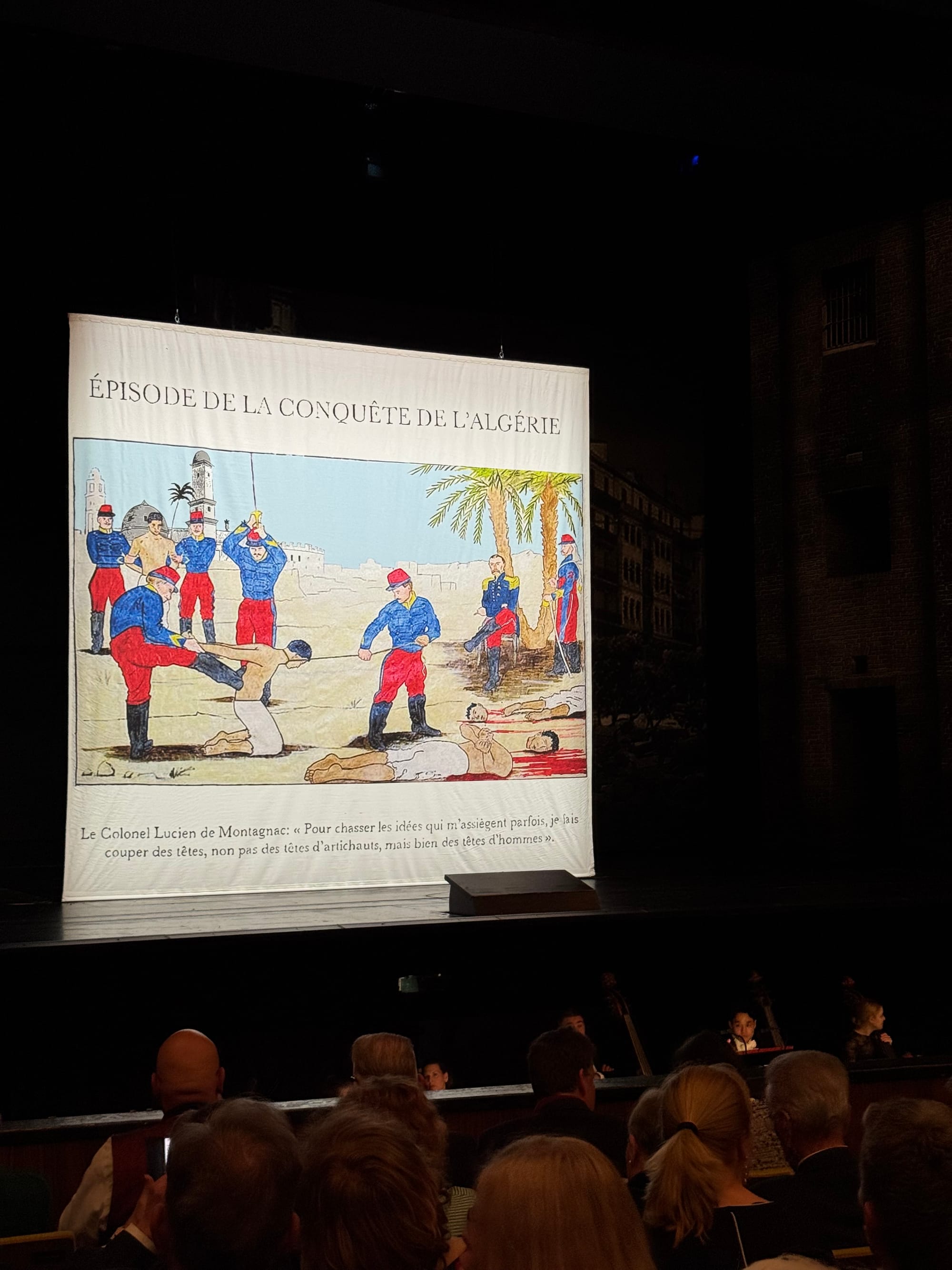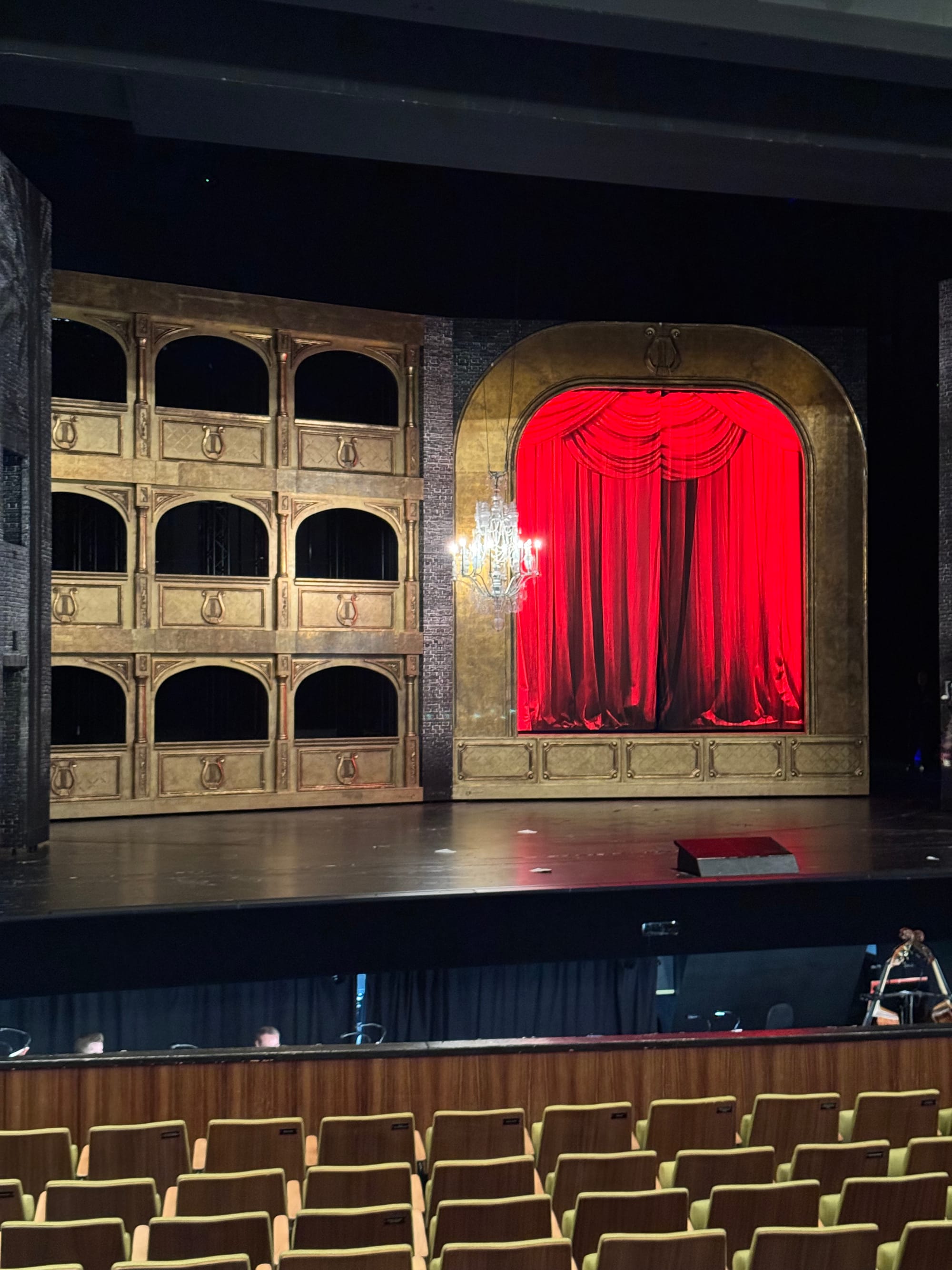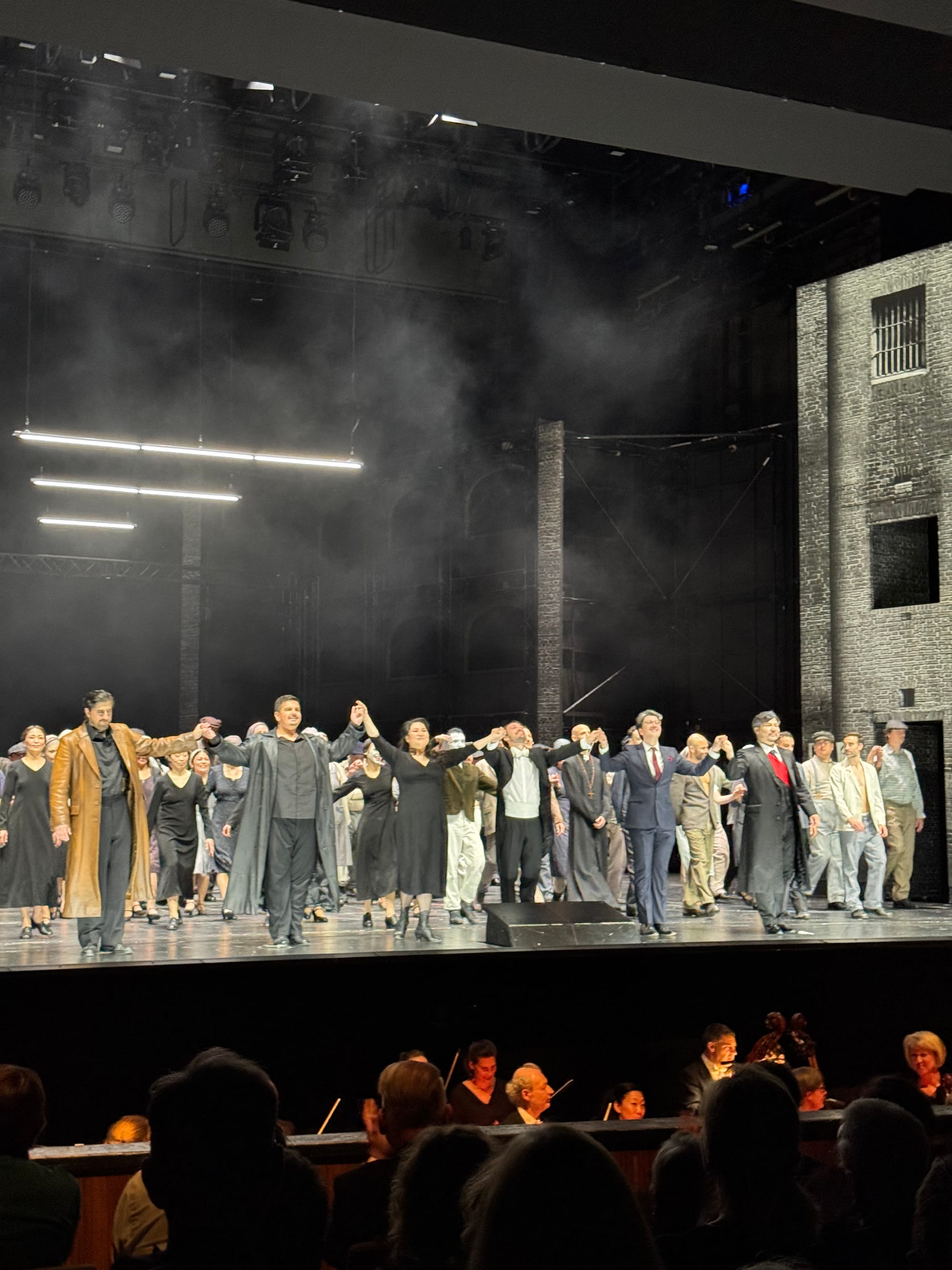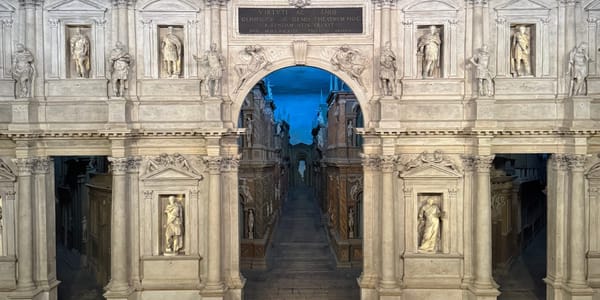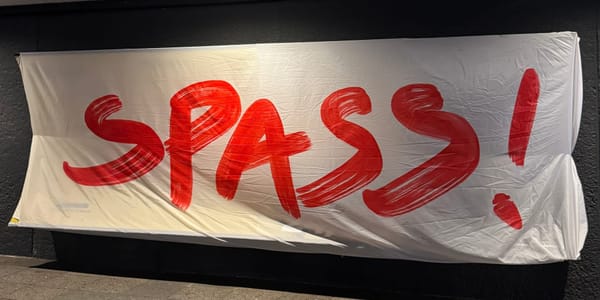Les Vêpres Siciliennes at Deutsche Oper Berlin
Olivier Py’s production grapples with Empire and violence, but its chaotic staging at times drowns out Verdi’s emotional and musical clarity.

🎭 Les Vêpres Siciliennes
🎶 Giuseppe Verdi, 1855
💭 Olivier Py, 2022
🏛️ Deutsche Oper Berlin
🗓️ 24.05.2025
“NUR MUT! WIR WOLLEN DEM UNWETTER TROTZEN. ANS WERK!“
It was bound to happen eventually: my first Deutsche Oper production that I left with very mixed feelings. Les Vêpres Siciliennes, in Olivier Py’s staging, is an ambitious and unrelenting take on Verdi’s grand opera—but one that, for all its intensity and thematic weight, buckles under the weight of its own visuals. Musically, the evening was phenomenal. The orchestra and cast delivered the kind of rich, dynamic Verdi performance one hopes for. But the staging? Inconsistent, exhausting, and at times baffling. Not in a delightfully absurdist Serebrennikovian way, but more in a “what do I even focus on and why are the chandeliers still moving?” kind of way.
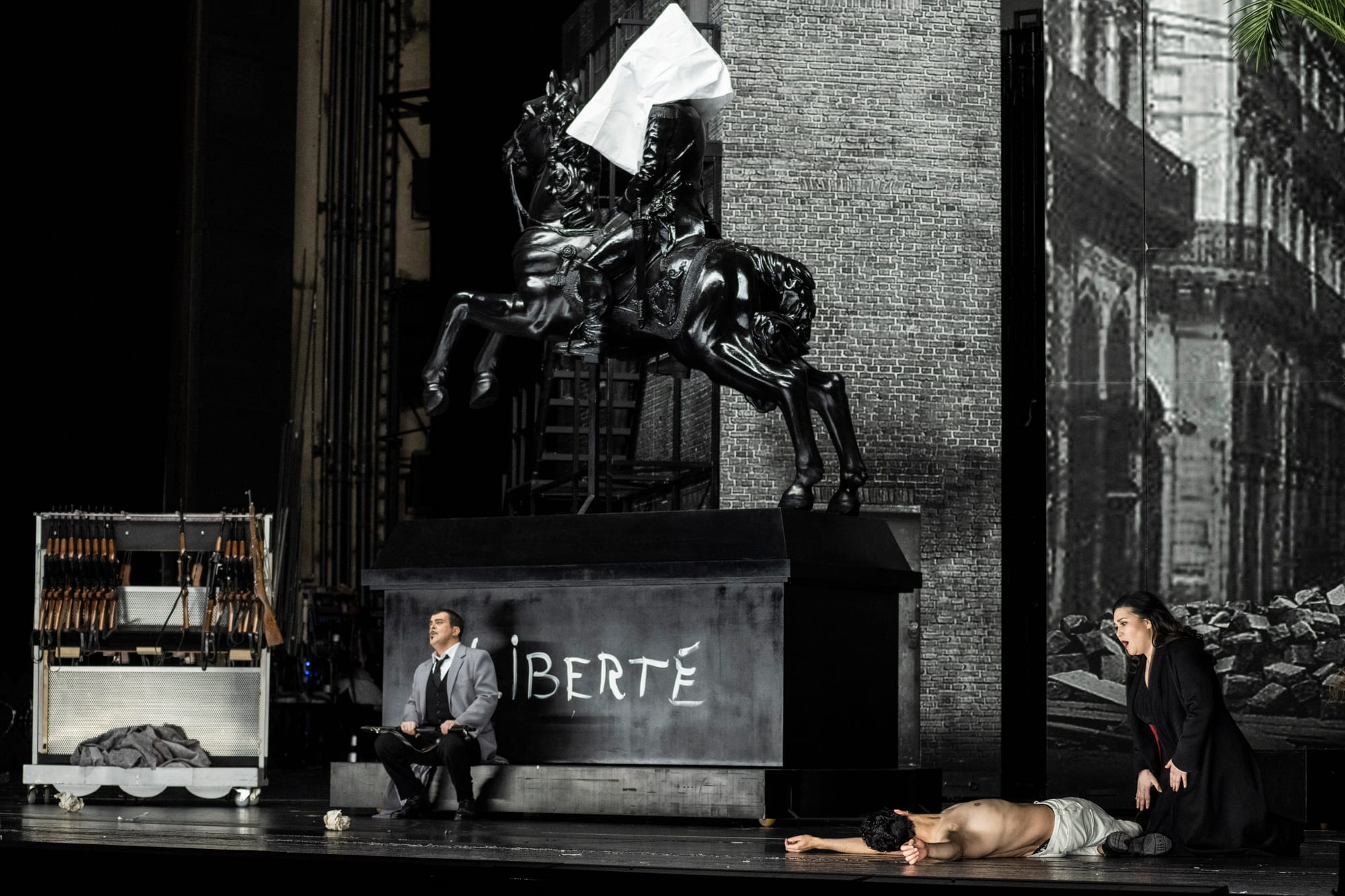
Echoes of Empire, Shadows of Revolt
The opera’s original story is set in 13th-century Sicily under French occupation. It’s a political narrative about state-sanctioned violence, systemic oppression, and the human toll of empire—a dynamic the production leans into, and then some. Py’s version shifts the setting to French-occupied Algeria in the 20th century, layering in echoes of modern conflict and imagery. The soldiers on stage often resemble modern American GIs more than colonial troops, and one scene—where they kick around a severed head like a football—evokes Abu Ghraib or Guantanamo more than Napoleonic conquest.
The opening is powerful, at least in concept: before a single note is played, a 19th-century comic depicting the assassination of an Algerian by the French slowly rises like a curtain. Behind it, actors recreate the image in a frozen tableau before animating the scene. The victim is Frédéric, brother of the opera’s heroine Hélène—a plot-defining murder that drives much of the story’s emotional arc. It’s a bold and chilling start, grounding the opera’s themes of colonial violence in something at once graphic and theatrical.
Thematically, Les Vêpres Siciliennes centers on Hélène’s torment—caught between her love for Henri and her hatred of the occupying force that murdered her brother. When she discovers that her lover’s father, Guy de Montfort, was the man who ordered the execution, her loyalty fractures completely. In this, she joins the operatic lineage of Norma and Aida, heroines divided between the personal and the political, their private passions clashing with collective responsibility.
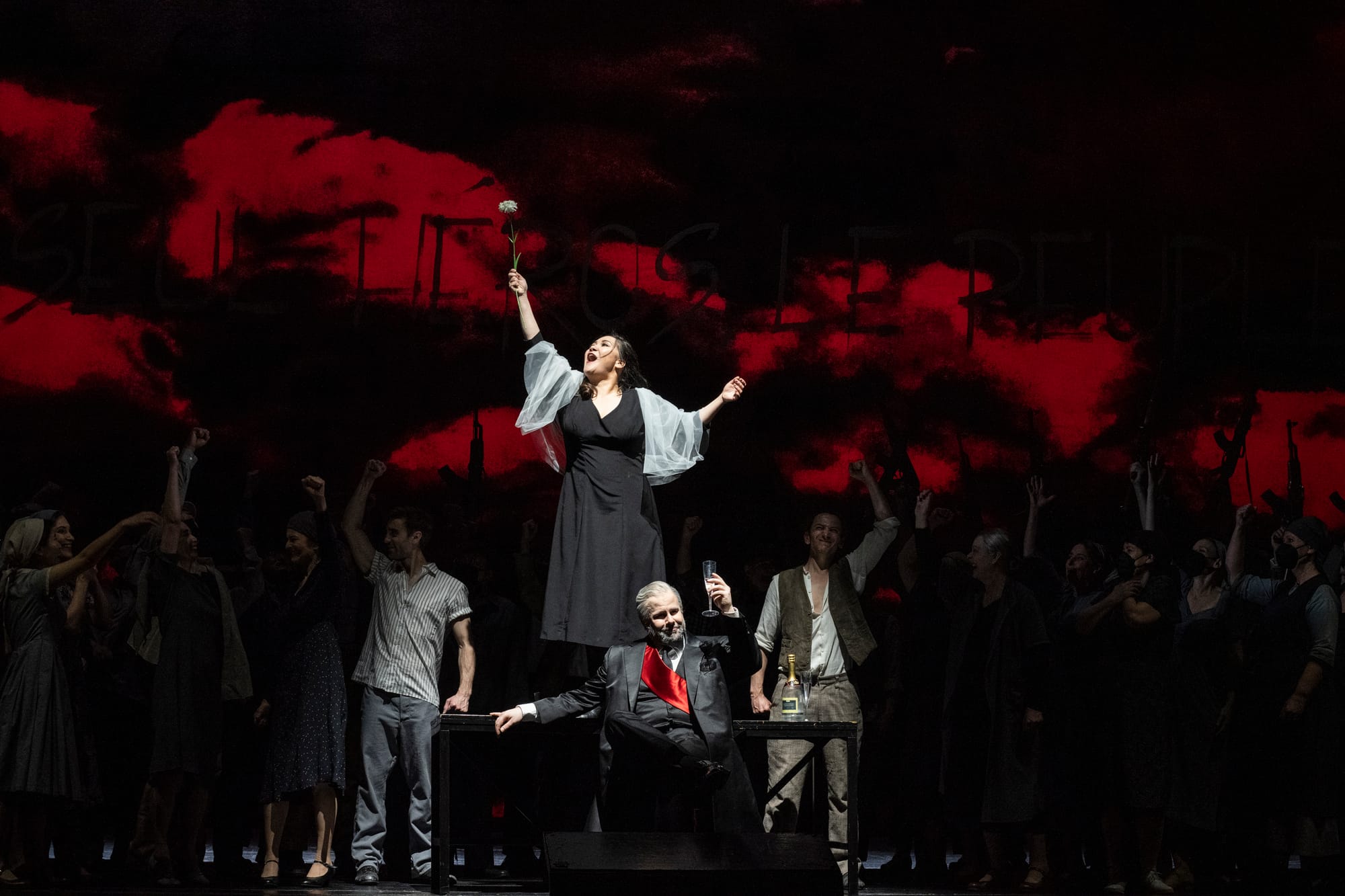
A Visually Overwhelming Affair
While the thematic foundation is compelling, the production’s execution is less so. Visually, it’s a hodgepodge of competing styles: pixelated stage-filling streetscapes, historicist costumes that verge on quinceañera kitsch, stenciled palm trees, ghostly figures gliding eerily across the stage, and a liberal use of French flags. At times, it verges on the surreal—not in a carefully constructed dream-logic way, but in the sense that the aesthetic choices seem to be layered on top of one another with little cohesion.
The production’s greatest challenge is its tendency toward visual overload, particularly in key emotional moments. During Henri’s discovery that de Montfort is his father—a pivotal scene—the stage is cluttered with movement. Chandeliers descend and rise continuously, perhaps meant to mirror emotional upheaval, but ultimately distracting from the intensity of the confrontation. Adding to the chaos, Henri’s mother, reimagined as one of the opera’s many ghostly presences, paces across the stage incessantly. The emotional impact of the scene is lost in the noise.
The final act takes an even more bewildering turn. The stage morphs into something that feels lifted straight from a 2010s talent show: shadow silhouettes act out scenes on a screen that faces the audience, in a stylistic shift so jarring it borders on parody.
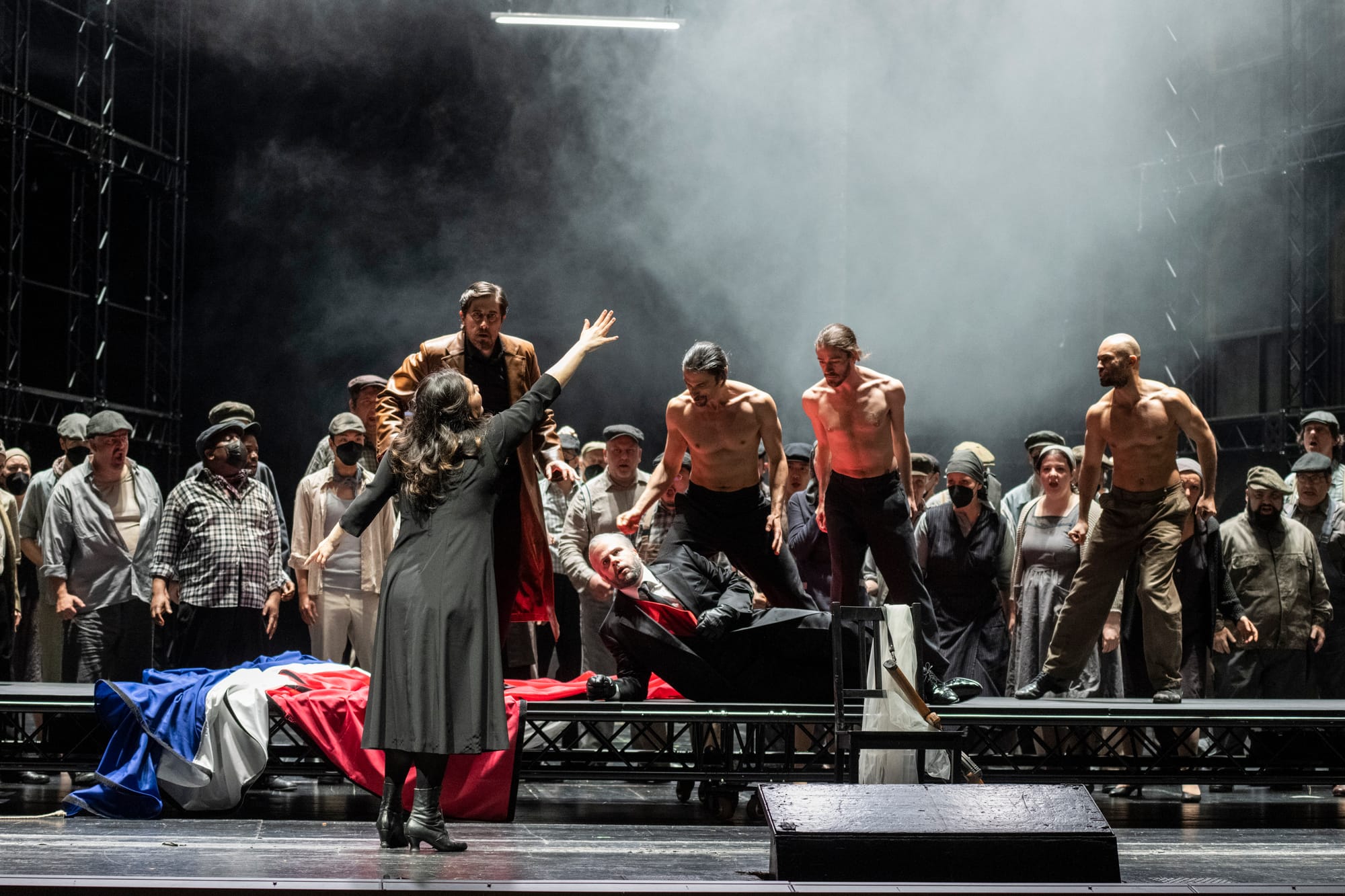
Why does all this matter? Because Verdi’s operas are already emotionally dense. His characters pivot from hope to despair to resolve in a matter of measures. The drama moves quickly, especially in the psychological turns of his protagonists. When the staging tries to match that intensity beat-for-beat with visual spectacle, the result can be disorienting. In contrast, a more grounded production—like the Don Carlo I saw the following evening—allows that internal movement to breathe and resonate. Granted, Don Carlo unfolds with steadier dramatic pacing, but the lesson stands: sometimes less really is more.
Ultimately, for all its excesses, Py’s Vêpres makes a compelling point. It confronts colonial brutality head-on and makes a real effort to bring historical relevance to the fore. But in doing so, it forgets to trust the opera itself. Verdi gives us more than enough to feel; we don’t need the dancing chandeliers.
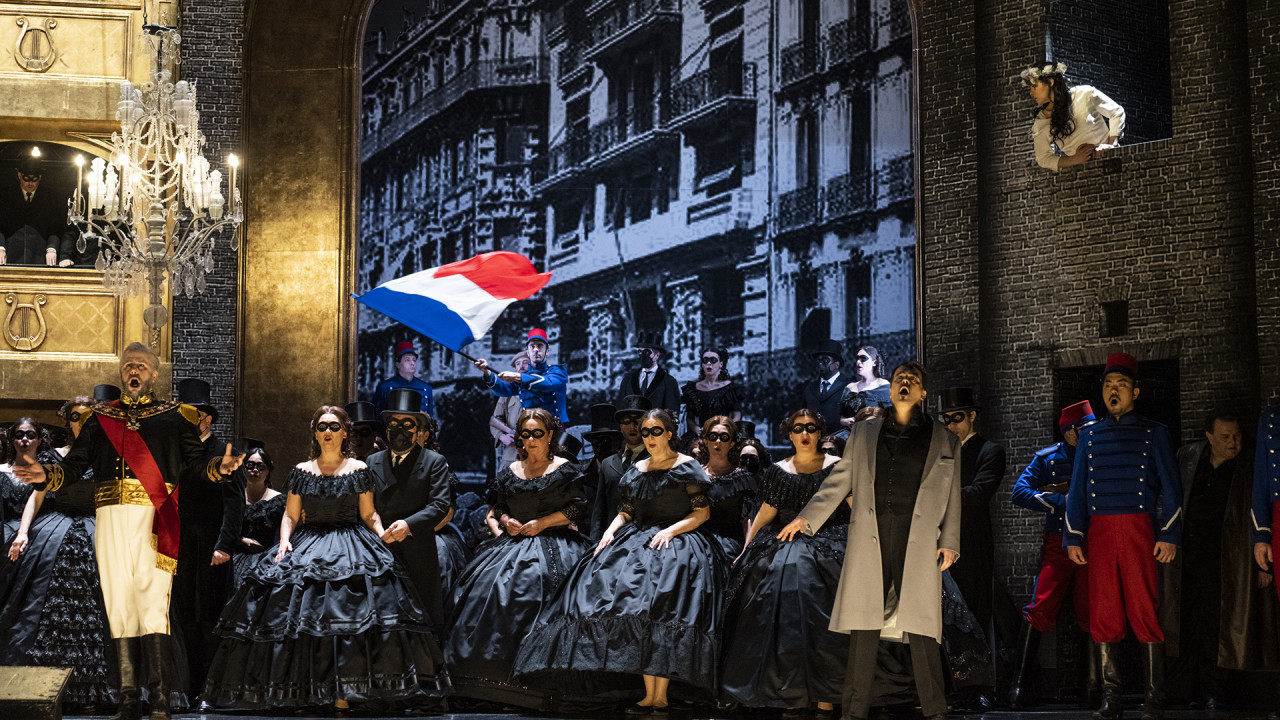
Cast - 24.05.2025
Conductor Dominic Limburg
Stage Director Olivier Py
Set Design; Costume Design Pierre-André Weitz
Light Design Bertrand Killy
Chorus Director Jeremy Bines
Dramaturge Jörg Königsdorf
Hélène Hulkar Sabirova
Ninetta Arianna Manganello
Henri Valentyn Dytiuk
Guy de Montfort Dong-Hwan Lee
Jean de Procida Roberto Tagliavini
Thibault Chance Jonas-O'Toole
Danieli Gideon Poppe
Mainfroid Jörg Schörner
Robert Joel Allison
Le Sire de Béthune Gerard Farreras
Le Comte de Vaudemont Jared Werlein
Orchestra Orchester der Deutschen Oper Berlin
Choir Chor der Deutschen Oper Berlin
Dancers Opernballett der Deutschen Oper Berlin
